Orchid Delirium and Conservation
Orchid Delirium and Conservation. Why are Florida orchids so special? Florida is an incredibly bio-diverse state that is capable of fostering all sorts of life sufficiently. Florida’s original native orchid population has been destroyed through the encroachment of civilization. It’s hard to believe that there was once a time where these now rare Florida orchids could be found much more frequently in Florida. Because these plants become highly specialized to live in their regions Orchids can experience the many effects that can be caused by environmental change, fluctuating water levels, and even changes in biodiversity. In addition to environmental change, the root cause for the low orchid numbers experienced within Florida can be in part attributed to 19th-century phenomena “Orchidelirium”.
Orchids Delirium and Conservation: Orchids are Adored for their Variety
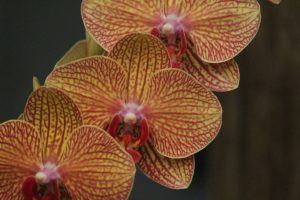
Due to the anatomy and physiology of the plants, orchids have cleverly adapted in a plethora of ways specifically designed to catch the attention of their specialized pollinators. The Florida Butterfly Orchid21 (Encyclia tampensis) is not able to self pollinate like other species of orchid; this plant is specialized to attract pollinators. An example of the incredibly unique pollination habits of the orchid plant is none other than the elusive Corkscrew’s Ghost Orchid (Dendrophylax lindenii) which has created a symbiotic relationship with its main pollinator, the Giant Sphinx Moth19 (Cocytius antaeus).
Through specialization orchid plants have been able to number more than 25,00026 species of flowering plants that range vastly in both color and shape. Orchidaceae (the official name for the orchid plant family) falls within the taxonomic order of Asparagales, which also includes the plant families like that of the iris and asparagus families. Orchid delirium and conservation were fueled by the orchid’s inspiring range.
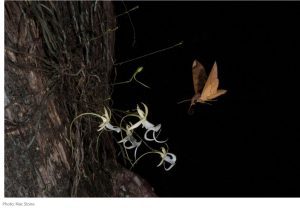
Orchid Delirium and Conservation: The Frenzy
Though orchids are seemingly characterized by a particular type of plant shape, these plants can range in notably different shapes called monopodial and sympodial.12 monopodial orchids are typically characterized as orchids that have a single upright stem, monopodial orchids do not have fleshy pseudobulbs like their sympodial counterparts which means these often need more frequent watering and fertilizing. Sympodial orchids have large pseudobulbs that are designed to store water and nutrients for the orchid, in addition sympodial orchids grow more or less vertically.
When understanding orchids it is important to know that they come in all shapes and sizes. Orchids may have extra parts like the cattleya orchids which have an extra sheath or modified leaf made to protect the emerging flower.4
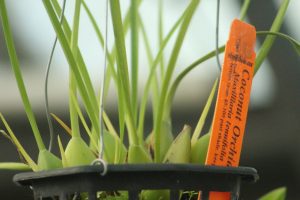
It is the unique leaves and coloring acquired through gradual coevolution26 and adaptations that have gifted the orchid with 25,000 uniquely beautiful species, and also inspire Orchidelirium. Orchidelirium is most often used to describe the orchid craze in the 19th century that encapsulated Victorian England. Fueled by the obsession with orchids, wealthy people would set out on often dangerous expeditions in search of these plants, sometimes elusive beauties. Orchid delirium and conservation can be traced over 100 years back.

Orchid Delirium and Conservation
Orchid hunting would often be romanticized, ending in the death of french merchants in the Orinoco River, destruction of Andean forests in pursuit of these flowers, and many cases of these orchids being functionally extinct in the wild due to orchid poaching.20 To quote the senior research leader for the Royal Botanical Gardens Mike Fay,14 “There are documented cases of new slipper orchids having been discovered in south-east Asia in recent years. And, before they’ve even been officially described, populations have been stripped from nature and it is effectively extinct in the wild”.
Orchidmania is something that has been extremely detrimental to these species for two prime reasons:
- Populations of orchids are not able to recover.
-
-
- Orchids have an incredibly specialized reproduction process and most produce minuscule seeds that are difficult to germinate, this in combination with the specialized pollination the orchid plant requires, reduces the speed it takes for populations of orchids to accumulate.
-
- Orchids are difficult to maintain and hard to flower.
-
- First-time orchid buyers often kill their orchids from poor management or throw away their plants when the flower of the orchid drops. Both of these are poor practices especially when this occurs with “rare” or native orchid species.

One of the factors attributing to the loss of suitable orchid habitat is the creation of man-made levies and drainage that has effectively reduced the amounts of water that is needed by an orchid like the Cigar Orchid (Cyrtopodium punctatum) native to southern Florida. This is one reason why Ari Shapiro of NPR News suggests the long-term solution for native orchid reintroduction is large-scale ecological restoration. Larry Richardson, a wildlife biologist asserts in an interview with Ari Shapiro that the best way to restore the native Cigar Orchid is hydrology restoration of the Florida Panther National Wildlife Refuge and areas similar to it. In Larry Richardson’s words “Restoring hydrology is actually going to help our deer population, which can help our panther population, which’ll help our orchid population.”25
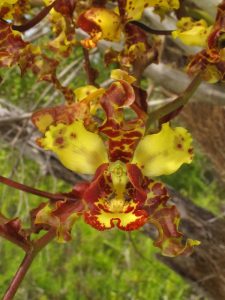
While it is safe to say that Orchidmania and environmental change have had an overtly detrimental impact on the many different species of orchid, the argument can be made that orchid delirium has led to its conservation. Although orchidmania can be detrimental to many native species, keeping orchids can be an extremely beneficial way to learn about important native pollinators and climates. Because these organisms almost entirely grow and germinate within conditions that are ideal for the plant, they can be a good indicator in nature that a region is fairly suitable or even exiting the grasp of environmental change. When sourcing your orchids remember to make sure the orchids are sourced sustainably, and from a trusted and reputable grower. Illegal orchid hunting is something that occurs still today, The United States29 actually protect all orchid species native to the United States and its territories under the Convention on International Trade in Endangered Species of Wild Fauna and Flora.
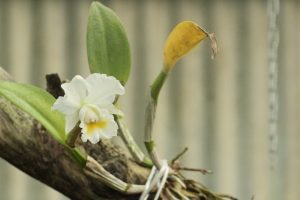
Mead Botanical Gardens are a 48-acres17 of botanical diversity that is able to benefit the urban pollinators found in Winter Park. The park is named after renowned horticulturist and butterfly specialist, Theodore Luqueer Mead24, who is responsible for the discovery of about 20 new butterflies, including the Mead’s Sulphur butterfly also known as the Colias meadii. Although Mead discovered many butterfly species, Mead’s Botanical Gardens was made to be home for his extensive collection of orchids after his death in 1936. Something that makes the history of the botanical gardens so unique are the two most famous orchids hybridized by Theodore Luqueer Mead, Cattleya Oviedo which was successfully hybridized in 1904, and the Cattleya Meadii also successfully hybridized in 1904. For a chance to experience some of the Orchids passed down by Mead be sure to visit the website of the urban botanical garden named after him18.
Sources
- Arditti, J. (2008, June 28). An history of orchid hybridization, seed germination and tissue culture. Retrieved from Oxford Academic: Botanical Journal of the Linnean Society: https://doi.org/10.1111/j.1095-8339.1984.tb02567.x
- Atlanta Botanical Garden. (2021). Cigar Orchid. Retrieved from Atlanta Botanical Garden: https://atlantabg.org/plant-profile/cigar-orchid/
- Bammer, M. (2019, June 17). Research update: Ground-nesting and orchid pollinators. Retrieved from University of Florida: INSTITUTE OF FOOD AND AGRICULTURAL SCIENCES: http://blogs.ifas.ufl.edu/entnemdept/2019/06/17/research-update-ground-nesting-and-orchid-pollinators/
- Bottom, S. (2017). Orchid Plant Parts and Why They Matter. Retrieved from St. Augustine Orchid Society: https://staugorchidsociety.org/PDF/OrchidPlantPartandWhyTheyMatterbySueBottom.pdf
- Butterflies and Moths of North America. (2021). Mead’s Sulphur. Retrieved from Butterflies and Moths of North America: https://www.butterfliesandmoths.org/species/Colias-meadii
- Cattleya Oviedo, T.L Mead 1904. (2021). Retrieved from Orchid Roots: https://orchidroots.com/detail/information/?pid=100003907&role=pub
- Chase, M. W., Cameron, K. M., Freudenstein, J. V., Pridgeon, A. M., Salazar, G., van den Berg, C., & Schuiteman, A. (2015, January 29). An updated classification of Orchidaceae. Retrieved from Botanical Journal of the Linnean Society: https://doi.org/10.1111/boj.12234
- City of Winter Park: Parks and Recreation. (2021). Mead Botanical Garden. Retrieved from City of Winter Park: https://cityofwinterpark.org/departments/parks-recreation/parks-playgrounds/parks/mead-botanical-garden/
- De, L. C., & Medhi, R. P. (August, 2019). Climate Change And Its Impact On Orchid Productivity. Retrieved from Research Gate: https://www.researchgate.net/publication/335421633_Climate_Change_And_Its_Impact_On_Orchid_Productivity
- Downing, J. L. (2011, March 30). Impacts of the Naturalized Bee Centris nitida on a Specialized Native Mutualism in Southern Florida. Retrieved from Florida International University:: https://digitalcommons.fiu.edu/cgi/viewcontent.cgi?article=1447&context=etd
- Fitzner, Z. (2019, August 2). Researchers discover multiple pollinators for the mysterious ghost orchid. Retrieved from Earth.com: https://www.earth.com/news/pollinators-ghost-orchid/
- Hannah. (2016, July 4). Monopodial vs. Sympodial Orchids. Retrieved from My First Orchid: https://myfirstorchid.com/2016/07/04/monopodial-and-sympodial-orchids/
- HOW TO CREATE ORCHID HYBRIDS. (2021). Retrieved from Orchid Care Zone: https://www.orchidcarezone.com/how-to-create-orchid-hybrids/
- Larner, S. (2021, August 4). Orchidelirium: when love turns to obsession. Retrieved from STATE LIBRARY OF QUEENSLAND: https://www.slq.qld.gov.au/blog/orchidelirium-when-love-turns-obsession
- Liu, H., & Pemberton, R. (2010, March 4). Pollination of an invasive orchid, Cyrtopodium polyphyllum (Orchidaceae), by an invasive oil-collecting bee, Centris nitida, in southern Florida. Retrieved from Canadian Science Publishing: https://doi.org/10.1139/B10-017
- Liu, Z.-J. (2020, April 22). Climate change on earth impact the diversity of orchids. Retrieved from Ecology and Evolution: https://ecoevocommunity.nature.com/posts/66650-climate-change-on-earth-impact-the-diversity-of-orchids
- Mead Botanical Garden. (2021). About. Retrieved from Mead Botanical Garden: https://www.meadgarden.org/about/
- Mead Botanical Garden. (2021). Timeline. Retrieved from Mead Botanical Garden: https://www.meadgarden.org/about/history/timeline/
- Mock, J. (2019). These Photos Reveal the Pollination Secrets of Florida’s Most Elusive Flower. Retrieved from National Audobon Society: https://www.audubon.org/magazine/summer-2019/these-photos-reveal-pollination-secrets-floridas
- Munera, J. M. (2005). The Tragic Saga of the Scorpion Flower, Twelve Portraits of the Dracula Orchid. Re Vista: Harvard Review of Latin America. Retrieved from https://web.archive.org/web/20100707145627/http://www.drclas.harvard.edu/revista/articles/view/820
- North American Orchid Conservation Center. (2021). Encyclia tampensis: Florida Butterfly Orchid. Retrieved from North American Orchid Conservation Center: https://goorchids.northamericanorchidcenter.org/species/encyclia/tampensis/
- Orchid Roots. (2021). Cattlianthe Meadii, T.L Mead 1904. Retrieved from Orchid Roots: https://orchidroots.com/detail/100032927/hybrid/?tab=sum
- Pemberton, R. W., & Wheeler, G. S. (2006, August). Orchid bees don’t need orchids: evidence from the naturalization of an orchid bee in Florida. Retrieved from Pub Med: https://doi.org/10.1890/0012-9658(2006)87[1995:obdnoe]2.0.co;2
- Rollins College Archives. (2021). Theodore Mead – The Man Behind the Mead Botanical Legacy Garden in Winter Park. Retrieved from Rollins College Archives: https://blogs.rollins.edu/libraryarchives/2016/11/17/theodore-mead-the-man-behind-the-mead-botanical-legacy-garden-in-winter-park/
- Shapiro, A. (2005, May 23). Efforts to Restore Florida’s Orchids into the Wild. Retrieved from NPR: https://www.npr.org/templates/story/story.php?storyId=4663232
- The Editors of Encyclopaedia Britannica. (2021, August 8). Orchid – Structural Diversity. Retrieved from Brittanica: https://www.britannica.com/plant/orchid/Structural-diversity
- The Orchid Journal. (1953, April). Theodore Luqueer Meed. The Orchid Journal, 159-163. Retrieved from Mead Botanical Garden: https://meadgarden.wpengine.com/wp-content/uploads/2015/08/TLMead_OrchidJournel_by_EdGrover-Small.pdf
- U.S Fish and Wildlife Services. (2011, December 2-3). Native Orchid Conservation on the Florida Panther National Wildlife Refuge: A Review of Cooperative Research, Posed Questions, and Recommendations. Retrieved from U.S Fish and Wildlife Services: https://www.fws.gov/uploadedFiles/Orchid%20research_summary%202011%20(link%20in%20partners%20promo%20page).pdf
- U.S Fish and Wildlife Services: International Affairs. (2021). Orchids. Retrieved from U.S Fish and Wildlife Services: International Affairs: https://www.fws.gov/international/plants/orchids.html
Photo Sources
- Hannah. (2016, July 4). Monopodial vs. Sympodial Orchids. Retrieved from My First Orchid: https://myfirstorchid.com/2016/07/04/monopodial-and-sympodial-orchids/
- Larner, S. (2021, August 4). Orchidelirium: when love turns to obsession. Retrieved from STATE LIBRARY OF QUEENSLAND: https://www.slq.qld.gov.au/blog/orchidelirium-when-love-turns-obsession
- Mock, J. (2019). These Photos Reveal the Pollination Secrets of Florida’s Most Elusive Flower. Retrieved from National Audobon Society: https://www.audubon.org/magazine/summer-2019/these-photos-reveal-pollination-secrets-floridas
- Shapiro, A. (2005, May 23). Efforts to Restore Florida’s Orchids into the Wild. Retrieved from NPR: https://www.npr.org/templates/story/story.php?storyId=4663232








